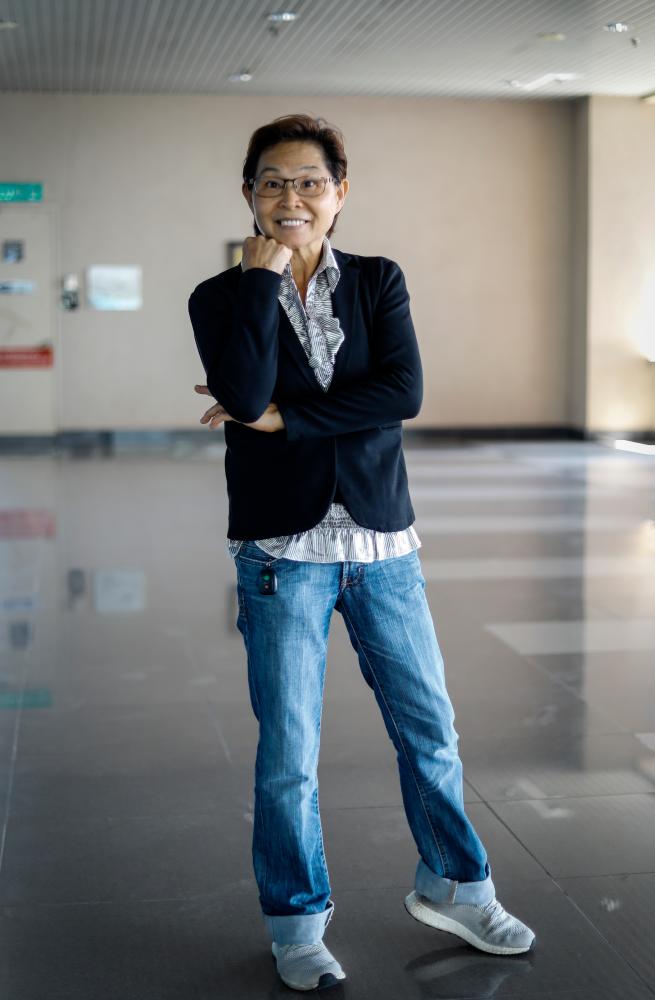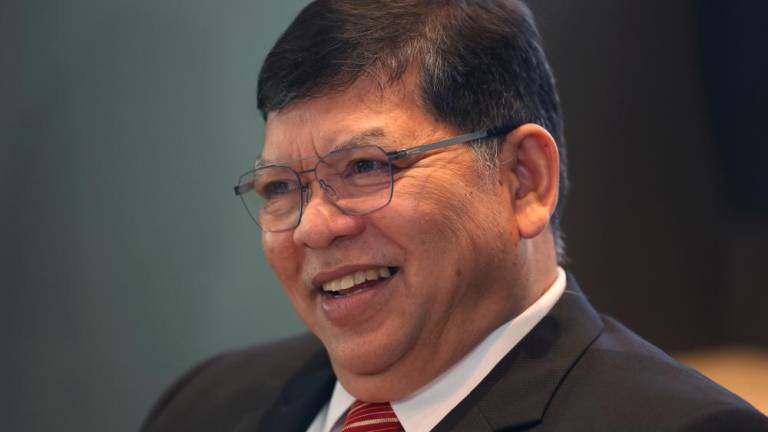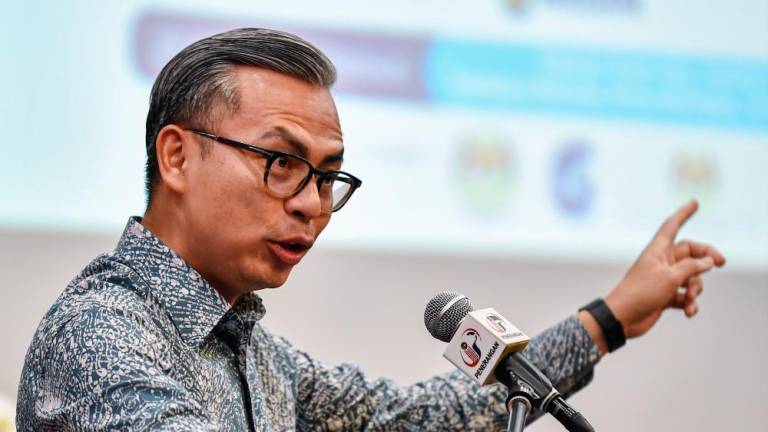AFTER years of doing her job translating what public figures say into sign language, more and more people are beginning to notice Tan Lee Bee and her colleagues.
Perhaps it is due to our current situation, being stuck at home all day, that is making us notice these unsung heroes in the little boxes on the bottom right side of our TV screen doing their work.
Tan stands out from the others due to her very animated style which has drawn some not-so-nice comments, but she takes that in stride.
When she started out, Tan, 58, had no formal training in sign language. She has a sister, and a brother-in-law who are hearing impaired.
“It runs in the family on my mother’s side. My mother’s brother is also deaf. It is a genetic issue but it is a recessive gene.”
Tan used to follow her sister to special classes for the hearing impaired, and that is how she picked up sign language which has not only allowed her to communicate with her sister, but with her sister’s classmates as well. She became fluent with help from her sister.
“My cousin passed away a few years ago. She wasn’t very lucky. She suffered from depression and had nobody who could communicate with her.”
Her career as a sign language interpreter began with Selamat Pagi Malaysia (SPM) in the mid 1980s which was modelled after Good Morning America, a popular morning news show programme in the US.
“I must give credit to Tok Mat (Tun Mohamed Rahmat, the former Information Minister) because we wanted the public to know more about sign language. During the two-hour SPM show, we would have newscasters like Harjit Singh Hullon, Farid Kamaruddin and Hashim Embi who will be reading the news and I will be interpreting in sign language. Back then there were no special boxes. I stood behind a sofa and interpreted the five- to six minute-long news [segment].
“Every day after the show they would sit down and have meetings with the minister as well as media luminaries such as Faridah Merican, Rahim Razaki and Ahmad Tarmimi Siregar.”
Around the time she got the opportunity to study in the US, that segment was stopped. At the end of December 1995, Tan got a call asking if she wanted to do sign language interpretation again.
“I had just had my son. So I went back in.”
In 1995, Tok Mat decided to have the sign language interpreters featured during the news segments.
“Many people were against the minister’s idea. They said if you put us there, it will spoil how the news segment looked. The minister said he did not care, and that even a small tiny egg-shaped image would do. [We ended up being] featured in a small oval at the corner of the TV screen.”
She is full of praise for Tok Mat, who essentially did something that was not done in Southeast Asia up to that point, and Malaysia was among the first countries in Asia to allocate some space for the hearing impaired to be allowed to follow the news.
“Without him, we may have only started doing this ten years later.”
It was also former Minister of Telecommunication and Multimedia Gobind Singh Deo who ordered the interpreters’ tiny section to be enlarged.
When asked about her newfound celebrity, Tan spoke about a recent viral cartoon inspired by her. “The face looks like my friend, but the sign language [style] is me. The artist who drew that was obviously watching me very closely.”
Referring to her very fast-paced style, she compares it to how certain newscasters have a very distinctive style of reading the news.
“Some interpreters have boring fingers. Watching them can put you to sleep. I guess I am just very aggressive. It is good that the public recognises us.”
Tan said that as the person doing the interpretation, she must be precise and use the right sign in the right context. To do that, she would often wait for an entire sentence to pass before beginning her work.
She has received praise for her efforts from ministers and politicians. Then again, it is about time that we recognise the work of people like Tan who help reach out to an audience that is still mostly overlooked.













